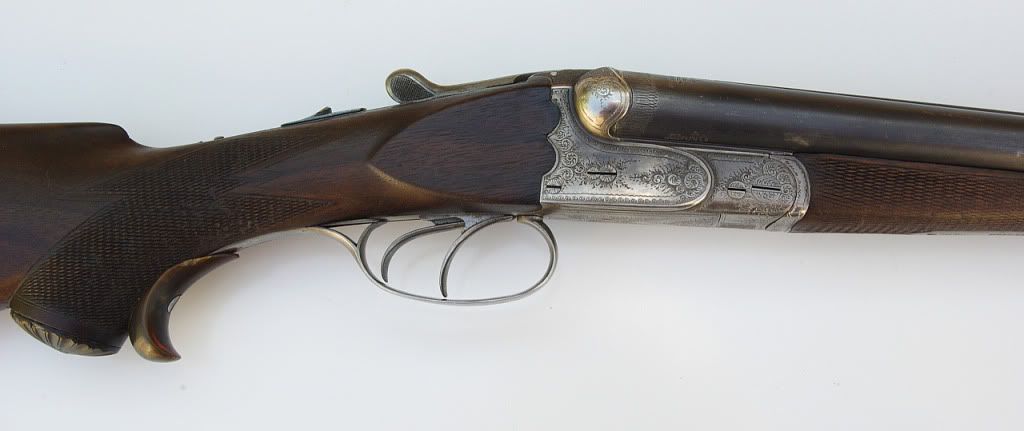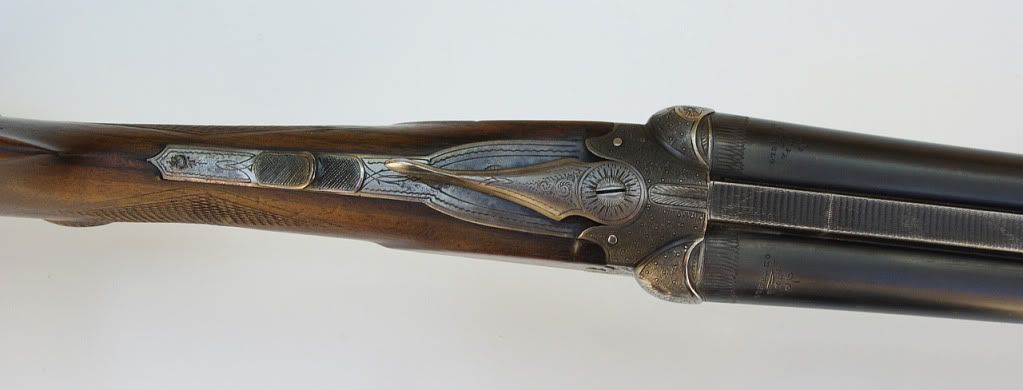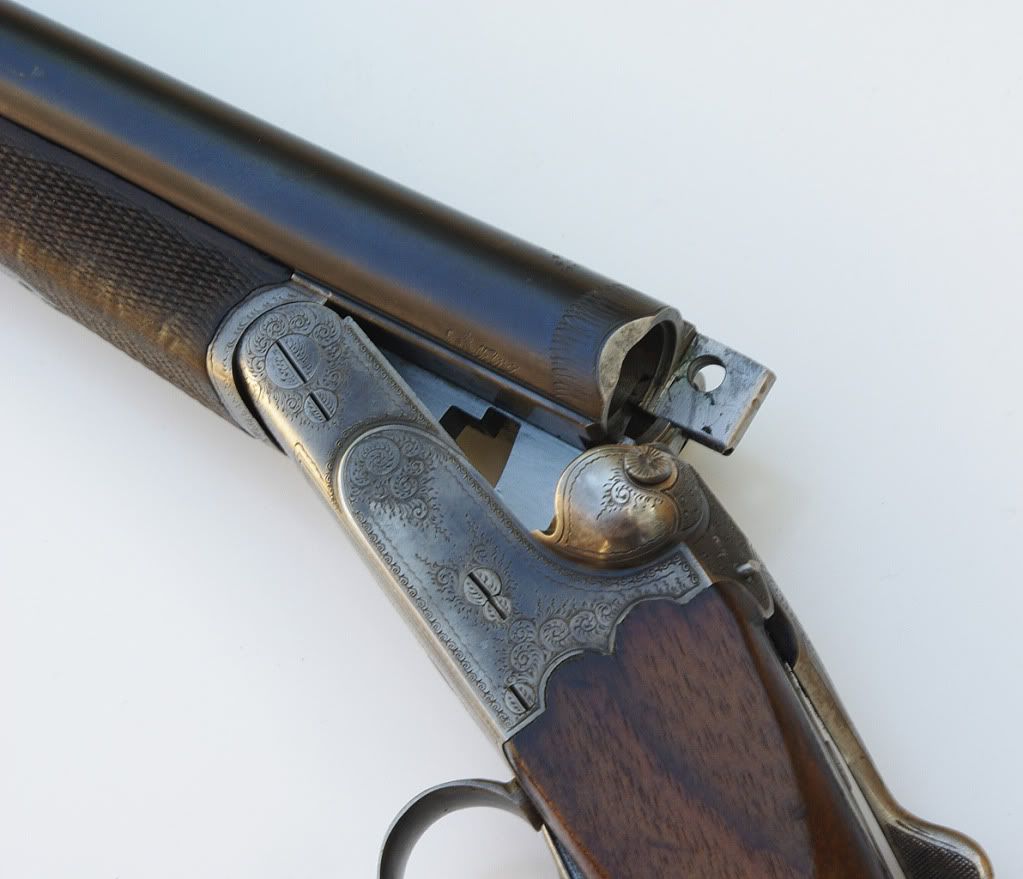A little old lady friend of my wife's from church contacted me a couple of years ago, knowing of my interest in guns. She said she had a gun that belonged to her late husband, and she'd like me to store it for her as she did not want to keep guns in the house. I'll show you photographs first, and then tell you what I have researched on it.




This 16 gauge double-barreled shotgun is of German origin and carries German Nitro (smokeless powder) proof marks at the base of each of its barrels, which are in the side-by-side pattern. Each barrel is stamped “Krupp Stahl” over the breech, which simply means that Krupp Steel was employed.
“G. Honold” is marked on one barrel, and “Ulm AD” on the other. Ulm, of course, is a city in Southern Germany.
G. Honold was in fact one Georg (pronounced Gay-org) Honold. He came from a large family of gunmakers who made firearms going back into the early 1800s. However, Georg was not a gunmaker, but a salesman. He sold firearms crafted by the many gunmakers in the Ulm area under his own name. He was active in the 1920s and 1930s. Although he sold many types of firearms, it appears that “drillings” (3-barreled guns typically employing two shotgun barrels over a rifle barrel) were most commonly sold. A double-barreled side-by-side is a not uncommon configuration, however.
This particular shotgun in all probability dates from the ‘20s or ‘30s. It features twin triggers which fire the individual barrels, automatic internal hammer cocking, and an automatic safety which engages when the breech is opened. It must be released before the gun can be fired. The gun has an unusual horn grip piece attached to the pistol grip of the stock.
It has decorative engraving on the receiver and trigger guard. The stock has been shortened and a cheap plastic butt plate substituted for the original, which was probably made of horn. This was probably done to fit a youth or a small woman. This would considerably diminish its value to any collector who might specialize in German long guns. The gun carries no serial number, which probably dates it more in the 1920s than the 1930s, when gun registration in Germany became the law. The metal and wood surfaces are in about 70% of original condition, with the understanding that the stock is really in only 25% condition given its unfortunate shortening.
As far as value is concerned, it is difficult to say. 16-gauge shotguns are not as popular here in the U.S. as they are in Europe; therefore its value as a sporting arm is not high, particularly with the very short stock. While the gun could probably be restored with a new stock, the original configuration would be very difficult and expensive to duplicate and would probably not be worth it. Few U.S. collectors specialize in European or German shotguns, so it would be difficult to sell in America. If it was sold to a dealer, the dealer would not offer much for two reasons. First, it would be hard to find a buyer, as this type of gun is not popular here. It would probably sit in inventory for a long, long time. Also, typically, a gun dealer would only offer 50% of what he thought he could get for it in order to make a profit.
Such a gun could be sold to an Arizona resident by an Arizona resident with no paperwork. If the gun was sold across state lines, it would have to be shipped to a Federal Firearms Dealer, who would in turn present it to the ultimate buyer. Federal transfer forms (back door gun registration) would have to be filled out, and the dealer typically would charge a fee (usually a percentage of the worth of the transaction or $20, whichever is more).
To a collector of such arms, the gun could have a worth (considering the stock modification) of ___to ___. The problem would be finding a buyer, and the expense that might entail for advertising. I would never expect to sell it for that to a gun dealer for the reasons already cited.
The street price for someone who might wish to buy it just as a curiosity, would probably be in the neighborhood of ___. As always, the value of a piece is always what the owner is willing to sell it for, and what the buyer is willing to pay.
OK, my esteemed and knowledgeable friends, I've pictured and described the gun as best I can. Help me fill in the blanks regarding value above! I need your help!
John